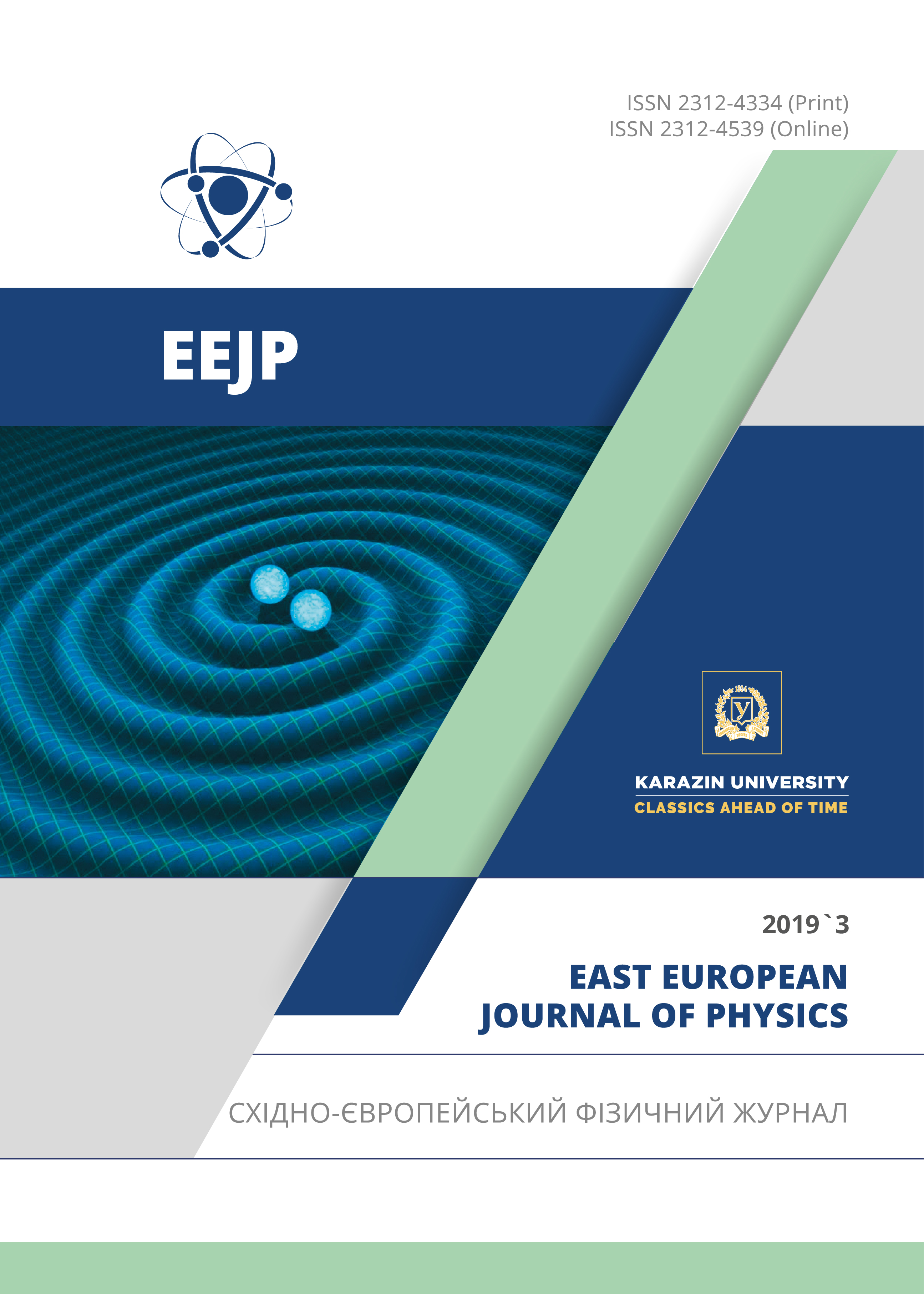Fixed Points Features in N-Point Gravitational Lenses
Abstract
A set of fixed points in N-point gravitational lenses is studied in the paper. We use complex form of lens mapping to study fixed points. There are some merits of using a complex form over coordinate. In coordinate form gravitational lens is described by a system of two equations and in complex form is described by one equation. We transform complex equation of N-point gravitational lens into polynomial equation. It is convenient to study polynomial equation. Lens mapping presented as a linear combination of two mappings: complex analytical and identity. Analytical mapping is specified by deflection function. Fixed points are roots of deflection function. We show, that all fixed points of lens mapping appertain to the minimal convex polygon. Vertices of the polygon are points into which dimensionless point masses are. Method of construction of fixed points in N-point gravitational lens is shown. There are no fixed points in 1-point gravitational lens. We study properties of fixed points and their relation to the center of mass of the system. We obtained dependence of distribution of fixed points on center of mass. We analyzed different possibilities of distribution in N-point gravitational lens. Some cases, when fixed points merge with the center of mass are shown. We show a linear dependence of fixed point on center of mass in 2-point gravitational lens and we have built a model of this dependence. We obtained dependence of fixed point to center of mass in 3-point lens in case when masses form a triangle or line. In case of triangle, there are examples when fixed points merges. We study conditions, when there are no one-valued dependence of distribution of fixed points in case of 3-points gravitational lens and more complicated lens.
Downloads
References
E.Y. Bannikova and A.T. Kotvytskiy, MNRAS 445(4):4435–4442, (2014), https://doi.org/10.1093/mnras/stu2068.
A.T. Kotvytskiy, TMP 184(1):160–174, (2015), https://doi.org/10.1007/s11232-015-0315-x.
A.T. Kotvytskiy, S.D. Bronza and S.R. Vovk, Journal of Kharkov National University V.N. Karazin. Series: Physics, 24, 55-59 (2016)
A.T. Kotvytskiy, S.D. Bronza, K.Yu. Nerushenko and V.Yu. Shablenko, in: Збірник наукових праць VI-ї Міжрегіональної науково-практичної конференції «Астрономія і сьогодення»: Collection of scientific researches of VI interregional scientific-practical conference “Astronomy and Present” (Vinnytsia, 2017). pp.198-213 (in Ukrainian)
A.T. Kotvytskiy and S.D. Bronza, Odessa Astronomical Publications, 29, 31-33, (2016).
S.D. Bronza and A.T. Kotvytskiy, Journal of Kharkiv National University V.N. Karazin, Series: Physics, 26, 6-32 (2017).
S.D. Bronza, Ju.V. Svyrydova and L.A. Kotvytska, Odessa Astronomical Publications, 31, 6-10, (2018), https://doi.org/10.18524/1810-4215.2018.31.144434.
A.T. Kotvytskiy, V.Yu. Shablenko and E.S. Bronza, Odessa Astronomical Publications, 31, 24-28, (2018), https://doi.org/10.18524/1810-4215.2018.31.144558.
A.O. Petters and F.J. Wicklin, Journal of Mathematical Physics 39, 1011 (1998), https://doi.org/10.1063/1.532367.
P. Schneider, J. Ehlers, E.E. Falco, Gravitational Lenses. (Springer-Verlag, Berlin Heidelberg, 1997), pp. 266.
H.J. Witt, A&A, 236(2), 311-322, (1990).
Authors who publish with this journal agree to the following terms:
- Authors retain copyright and grant the journal right of first publication with the work simultaneously licensed under a Creative Commons Attribution License that allows others to share the work with an acknowledgment of the work's authorship and initial publication in this journal.
- Authors are able to enter into separate, additional contractual arrangements for the non-exclusive distribution of the journal's published version of the work (e.g., post it to an institutional repository or publish it in a book), with an acknowledgment of its initial publication in this journal.
- Authors are permitted and encouraged to post their work online (e.g., in institutional repositories or on their website) prior to and during the submission process, as it can lead to productive exchanges, as well as earlier and greater citation of published work (See The Effect of Open Access).








